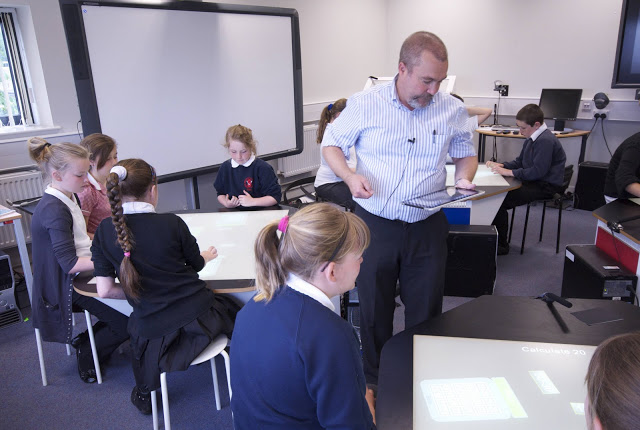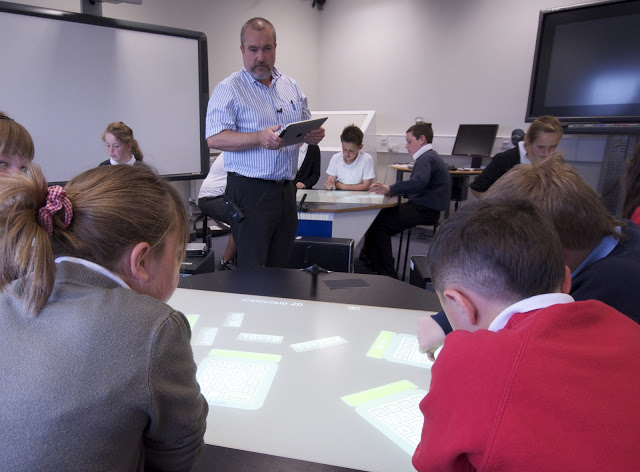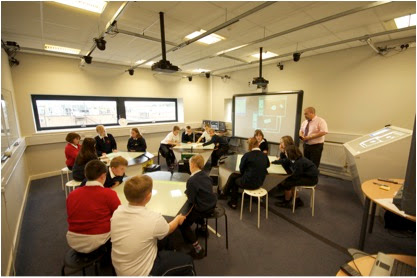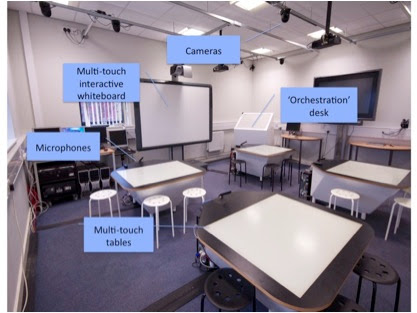New Publication
The SynergyNet team’s review paper on multi-touch technology and classroom pedagogy is now available:
Higgins, S.E., Mercier, E.M., Burd, E., & Hatch, A., (2011) Multi-touch Tables and the Relationship with Collaborative Classroom Pedagogies: a Synthetic Review. International Journal of Computer-Supported Collaborative Learning, 6 (4), 515-538. DOI: 10.1007/s11412-011-9131-y
http://www.springerlink.com/content/w3737v20m8l47630/
Abstract:
This article reviews the research and evidence about multi-touch tables to provide an analysis of their key design features and capabilities and how these might relate to their use in educational settings to support collaborative learning. A typology of design features is proposed as a synthesis of the hardware and physical characteristics of the tables so that the longevity of these factors and the associated analysis can be better preserved, particularly in relation to the range of ways in which they may be used collaboratively in classrooms. The variability of features relating to software is also analysed and key pedagogic issues identified. The aim that underpins this review is to relate the design of the technical features with key pedagogic issues concerning the use of digital technologies in classrooms, so as to provide a more robust basis for their integration in classrooms in terms of their potential to support or to improve learning.
SynergyNet at EARLI
Professor Steve Higgins will be attending EARLI in Exeter, presenting on our recent work:
Mercier, E.M., Higgins, S. & Burd, E. (2011, September) Interdisciplinary design research: developing educational technology. Paper presented at the European Association Research on Learning and Instruction (EARLI) in Exeter, UK.
SynergyNet at CSCL
Professor Steve Higgins from the SynergyNet team will be in Hong Kong, presenting on our recent work:
Hatch, A., Higgins, S., Joyce-Gibbons, A. & Mercier, E. (2011) NumberNet: Using Multi-touch Technology to Support Within and Between Group Mathematics Learning. In H. Spada, G. Stahl, N. Miyake & N. Law (Eds.) (2011) Connecting Computer-Supported Collaborative Learning to Policy and Practice: CSCL2011 Conference Proceedings. Volume I — Long Papers. International Society of the Learning Sciences, 176-183.
Alagha, I., Burd, E., Higgins, S. & Mercier, E. (2011) SynergyNet: Exploring Design and Pedagogy in a Multi-Touch Classroom. In J. Slotta (chair) Embedding CSCL in Classrooms: Conceptual and Methodological Challenges of Research in New Learning Spaces. Symposium in H. Spada, G. Stahl, N. Miyake & N. Law (Eds.) Connecting Computer-Supported Collaborative Learning to Policy and Practice: CSCL2011 Conference Proceedings. Volume III. International Society of the Learning Sciences, 1081-2.
iPad meets SynergyNet
The SynergyNet team got to bring some of their favourite things together this week – multi-touch technology, maths classes and really pretty hardware. See the photos below of Prof Steve Higgins running the mulit-touch tables and managing the classroom from his ipad, while the students worked on our newest application, NumberNet:



SynergyNet at AERA
Dr. Emma Mercier & Laura da Costa from the SynergyNet team will be in New Orleans presenting on our recent work:
Mercier, E.M., Higgins, S. & da Costa, L., (2011, April) Emergent Organizational and Intellectual Leadership In Collaborative Learning Groups. Paper presented at the annual meeting of the American Educational Research Association, New Orleans, NO.
Higgins, S., Mercier, E.M., Joyce-Gibbons, A. (2011, April) Supporting Multiple Levels of Classroom Collaborative Learning. In E. Mercier (chair) Designing Technology to Support Collaboration in the Classroom. Symposium presented at the annual meeting of the American Educational Research Association, New Orleans, NO.
Education Research in the SynergyNet Classroom
During October and November 2010, six schools visiting the SynergyNet Classroom in groups of 16. Spending up to 5 hours in the lab, these groups of ten-year olds had the opportunity to become familiar with the tables (with activities like asteroids, pebble pool and jigsaws)
The groups completed a number of maths and history tasks to allow the team to begin to answer questions about the differences between single and multiple groups working on these tasks, the manner in which the networked tables and screens supported whole-class discussion of the activities, and differences in table orientation (traditional or centered).
The image below shows a group of school children in the centered classroom with Prof Steve Higgins.

Networked content in use: Network Flick
Building on the Networked capabilities of the SynergyNet system, objects can be passed between tables. In the video below, the first group of school children pass images between their tables – to the excitement of the children and the SynergyNet team!
The SynergyNet Classroom
In May 2010, the four sit-to-use tables were delivered to SynergyNet, allowing us to build the first multi-touch classroom environment.

Networked Content
Since its inception, the SynergyNet content management system has supported networked content. The practical application of this is readily seen in the following video by James McNaughton. It shows two tables running side by side with content items being transferred by ‘flicking’ or ‘throwing’ towards the edge closest to the other table: